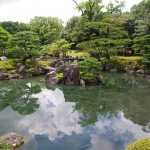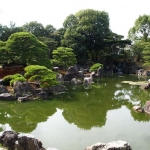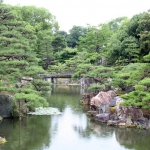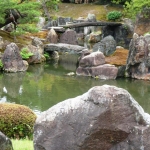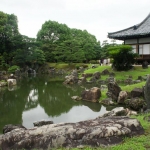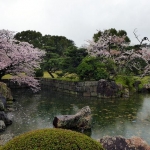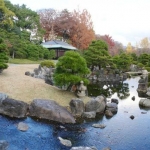Nijo-jo
Waterbirds
come and go,
their traces disappear–
yet they never
forget their path.
–Dogen
Nijo Castle was built by Ieyasu, the first of the Tokugawa shoguns, as an administrative center and symbol of power.
His residence was completed in 1603 while the Fushimi Momoyama Castle south of Kyoto remained the headquarters of the state. It was meant to impress all with the power and wealth of the Tokugawa. It is remembered as well as being the place that the last Tokugawa shogun surrendered power to the 15-year-old Meiji Emperor in 1867.
The garden at Nijo, approximately one acre in size has undergone many alterations over the centuries. Its composition centers on a large pond containing several island and numerous groupings of stones and plantings. The celebrated landscape designer and tea master Kobori Enshu supervised the work on the original gardens. According to tradition, the garden was originally designed to avoid thought of the changing seasons and the passing of time. No trees were planted, since they inevitably drop their leaves and give rise to thoughts of the transitory nature of life. The present trees were planted at a much later time.
See https://www2.city.kyoto.lg.jp/bunshi/nijojo/english/ninomaru/index.html
http://www2.city.kyoto.lg.jp/bunshi/nijojo/pdf/pamphlet.pdf
https://en.wikipedia.org/wiki/Mount_Penglai


